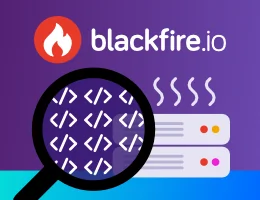Unit Testing
You might have noticed some subtle but nonetheless important bugs in the framework we built in the previous chapter. When creating a framework, you must be sure that it behaves as advertised. If not, all the applications based on it will exhibit the same bugs. The good news is that whenever you fix a bug, you are fixing a bunch of applications too.
Today's mission is to write unit tests for the framework we have created by using PHPUnit. At first, install PHPUnit as a development dependency:
1
$ composer require --dev phpunit/phpunit:^9.6Then, create a PHPUnit configuration file in example.com/phpunit.xml.dist:
1 2 3 4 5 6 7 8 9 10 11 12 13 14 15 16 17 18 19 20
<?xml version="1.0" encoding="UTF-8"?>
<phpunit
xmlns:xsi="http://www.w3.org/2001/XMLSchema-instance"
xsi:noNamespaceSchemaLocation="https://schema.phpunit.de/9.6/phpunit.xsd"
backupGlobals="false"
colors="true"
bootstrap="vendor/autoload.php"
>
<coverage processUncoveredFiles="true">
<include>
<directory suffix=".php">./src</directory>
</include>
</coverage>
<testsuites>
<testsuite name="Test Suite">
<directory>./tests</directory>
</testsuite>
</testsuites>
</phpunit>This configuration defines sensible defaults for most PHPUnit settings; more
interesting, the autoloader is used to bootstrap the tests, and tests will be
stored under the example.com/tests/ directory.
Now, let's write a test for "not found" resources. To avoid the creation of all dependencies when writing tests and to really just unit-test what we want, we are going to use test doubles. Test doubles are easier to create when we rely on interfaces instead of concrete classes. Fortunately, Symfony provides such interfaces for core objects like the URL matcher and the controller resolver. Modify the framework to make use of them:
1 2 3 4 5 6 7 8 9 10 11 12 13 14 15 16 17 18 19 20 21
// example.com/src/Simplex/Framework.php
namespace Simplex;
// ...
use Calendar\Controller\LeapYearController;
use Symfony\Component\HttpKernel\Controller\ArgumentResolverInterface;
use Symfony\Component\HttpKernel\Controller\ControllerResolverInterface;
use Symfony\Component\Routing\Matcher\UrlMatcherInterface;
class Framework
{
public function __construct(
private UrlMatcherInterface $matcher,
private ControllerResolverInterface $resolver,
private ArgumentResolverInterface $argumentResolver,
) {
}
// ...
}We are now ready to write our first test:
1 2 3 4 5 6 7 8 9 10 11 12 13 14 15 16 17 18 19 20 21 22 23 24 25 26 27 28 29 30 31 32 33 34 35 36 37 38 39 40 41 42
// example.com/tests/Simplex/Tests/FrameworkTest.php
namespace Simplex\Tests;
use PHPUnit\Framework\TestCase;
use Simplex\Framework;
use Symfony\Component\HttpFoundation\Request;
use Symfony\Component\HttpKernel\Controller\ArgumentResolverInterface;
use Symfony\Component\HttpKernel\Controller\ControllerResolverInterface;
use Symfony\Component\Routing;
use Symfony\Component\Routing\Exception\ResourceNotFoundException;
class FrameworkTest extends TestCase
{
public function testNotFoundHandling(): void
{
$framework = $this->getFrameworkForException(new ResourceNotFoundException());
$response = $framework->handle(new Request());
$this->assertEquals(404, $response->getStatusCode());
}
private function getFrameworkForException($exception): Framework
{
$matcher = $this->createMock(Routing\Matcher\UrlMatcherInterface::class);
$matcher
->expects($this->once())
->method('match')
->will($this->throwException($exception))
;
$matcher
->expects($this->once())
->method('getContext')
->will($this->returnValue($this->createMock(Routing\RequestContext::class)))
;
$controllerResolver = $this->createMock(ControllerResolverInterface::class);
$argumentResolver = $this->createMock(ArgumentResolverInterface::class);
return new Framework($matcher, $controllerResolver, $argumentResolver);
}
}This test simulates a request that does not match any route. As such, the
match() method returns a ResourceNotFoundException exception and we
are testing that our framework converts this exception to a 404 response.
Execute this test by running phpunit in the example.com directory:
1
$ ./vendor/bin/phpunitNote
If you don't understand what the hell is going on in the code, read the PHPUnit documentation on test doubles.
After the test ran, you should see a green bar. If not, you have a bug either in the test or in the framework code!
Adding a unit test for any exception thrown in a controller:
1 2 3 4 5 6 7 8
public function testErrorHandling(): void
{
$framework = $this->getFrameworkForException(new \RuntimeException());
$response = $framework->handle(new Request());
$this->assertEquals(500, $response->getStatusCode());
}Last, but not the least, let's write a test for when we actually have a proper Response:
1 2 3 4 5 6 7 8 9 10 11 12 13 14 15 16 17 18 19 20 21 22 23 24 25 26 27 28 29 30 31 32 33
use Symfony\Component\HttpFoundation\Response;
use Symfony\Component\HttpKernel\Controller\ArgumentResolver;
use Symfony\Component\HttpKernel\Controller\ControllerResolver;
// ...
public function testControllerResponse(): void
{
$matcher = $this->createMock(Routing\Matcher\UrlMatcherInterface::class);
$matcher
->expects($this->once())
->method('match')
->will($this->returnValue([
'_route' => 'is_leap_year/{year}',
'year' => '2000',
'_controller' => [new LeapYearController(), 'index'],
]))
;
$matcher
->expects($this->once())
->method('getContext')
->will($this->returnValue($this->createMock(Routing\RequestContext::class)))
;
$controllerResolver = new ControllerResolver();
$argumentResolver = new ArgumentResolver();
$framework = new Framework($matcher, $controllerResolver, $argumentResolver);
$response = $framework->handle(new Request());
$this->assertEquals(200, $response->getStatusCode());
$this->assertStringContainsString('Yep, this is a leap year!', $response->getContent());
}In this test, we simulate a route that matches and returns a simple controller. We check that the response status is 200 and that its content is the one we have set in the controller.
To check that we have covered all possible use cases, run the PHPUnit test coverage feature (you need to enable XDebug first):
1
$ ./vendor/bin/phpunit --coverage-html=cov/Open example.com/cov/src/Simplex/Framework.php.html in a browser and check
that all the lines for the Framework class are green (it means that they have
been visited when the tests were executed).
Alternatively you can output the result directly to the console:
1
$ ./vendor/bin/phpunit --coverage-textThanks to the clean object-oriented code that we have written so far, we have been able to write unit-tests to cover all possible use cases of our framework; test doubles ensured that we were actually testing our code and not Symfony code.
Now that we are confident (again) about the code we have written, we can safely think about the next batch of features we want to add to our framework.

